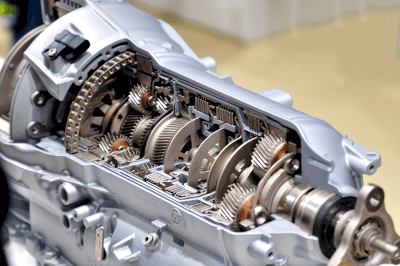What Is a Transmission?

A transmission is a critical component in vehicles and machinery, facilitating the regulation of revolutions or torque. It enables speed ratio adjustments to suit various operating conditions, differing from reduction gears by offering variable rather than fixed ratios.
Uses of Transmissions
Transmissions are essential for the smooth operation of automobiles, motorcycles, trains, and machine tools, allowing for the efficient transfer of power from the engine to the drive mechanism. They adapt to different demands, such as providing more torque for uphill starts or higher speeds for cruising.
Principle of Transmissions
Using gears or pulleys, transmissions alter torque and speed between input and output shafts. Gear transmissions adjust these variables by changing gear sizes, while pulley systems use varying pulley diameters and a connecting belt to modify the output.
Types of Transmissions
There are mainly two categories: stepped and continuously variable transmissions. Stepped transmissions, including manual (MT) and automatic transmissions (AT), offer fixed speed changes, whereas continuously variable transmissions (CVT) allow for seamless ratio adjustments.
- Manual Transmission (MT): Requires the driver to manually shift gears, using a clutch to interrupt and resume power from the engine.
- Automatic Transmission (AT): Automates gear shifting based on the vehicle’s speed and load, using a torque converter for smooth transitions.
- Continuously Variable Transmission (CVT): Provides step-less ratio changes, available in belt and toroidal types, for smooth acceleration and enhanced fuel efficiency.